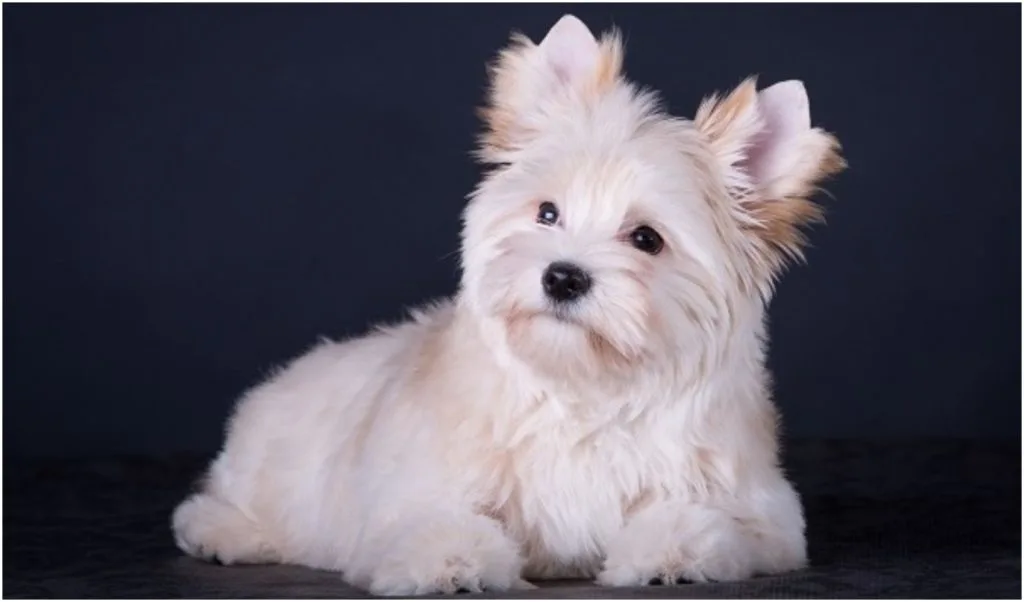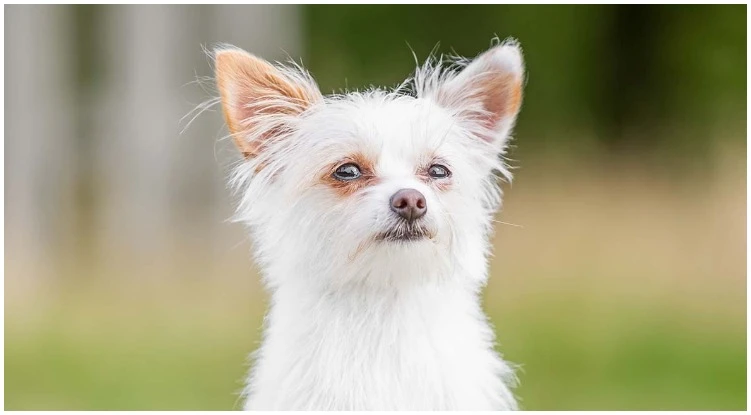The Yorkie is one of the most popular dog breeds out there. However, did you know that there is also a white Yorkie? Well, there’s a reason that you probably didn’t.
First of all, the American Kennel Club upholds strict standards governing the attributes of the Yorkie dog breed. You probably didn’t know by now that there are four official Yorkie colors: black, tan, blue, and gold.
But where’s the white? Right, it’s nowhere on that breed standards list.
So what’s the deal? Why do they seem to be unknown? Are white Yorkies real or a myth? And if they really exist, where do they come from. And what does it take to keep them healthy and clean? If you are ready to get answers to all these questions, you are in the right place. We’ll explain everything below. Shall we start?
What is a white Yorkie?
In the beginning, we will start with the simple question ‘What is a white Yorkie’? As the name basically implies, white Yorkies are just that—Yorkshire Terriers with white fur. However, purebred Yorkies come in specific color combinations: black and tan when they’re puppies and blue and gold when they’re adults. Kind of a mix through their lifetime. Also, It’s possible for Yorkies to fall somewhere between those two color schemes, with black-and-gold or blue-and-tan coats. You can’t have that much influence on this pup segment.
You should know that if you come across a white Yorkshire Terrier, there’s a very good chance that dog is a white Yorkie mix—the product of cross-breeding a Yorkshire Terrier and another dog breed, such as a West Highland Terrier or a Maltese (also known as a Morkie).
All that said, there are at least two ways in which you might come across a true Yorkshire Terrier with white hair. Keep reading to learn more.
Can a purebred white Yorkshire Terrier really exist?
We mentioned this dilemma above. However, many people will say no, purebred white Yorkies do not exist. But it helps to clarify your question. Are you asking about all-white Yorkies or Yorkies with a mixture of tan, blue, back, and white spotting? The question will dictate the answer, and it all comes down to genetics – as said previously, this is something that you can influence at all.

An albino Yorkie would be all-white
There’s one of the only ways a purebred Yorkshire Terrier could appear entirely white is if it suffers from albinism. Surprisingly, an Albino Yorkie would lack the ability to produce any pigment in its skin and fur due to a mutation of the SLC45A2 gene. Basically, this means the skin, nose, and footpads would appear pink, the irises would appear pink or red, and the hair would appear entirely white.
Also, this is not the only way that is possible to get white fur. There are a few other genetic mutations that could also lead to an irregular white coat in a canine. That can be a mutation on the merle gene. But, there aren’t any documented cases of albino Yorkies or these other mutations in the Yorkie breed, so if you’ve heard of or seen a white Yorkie, these probably weren’t the cause.
A Parti Yorkie would have some white fur
Heard of a Parti Yorkie? If not, there is a nonstandard form of the Yorkshire Terrier called the Parti Yorkie, which naturally produces somewhite fur. Analyzing this breed, this strand of purebred Yorkie was formed from the repeated breeding of Yorkies bearing the recessive “piebald gene” or S-Locus, a variation of the Microphthalmia Associated Transcription Factor (MITF) gene.
If you didn’t know, the Yorkies with the parti gene are not entirely white—they will also have black and blue or tan and gold mixed in, and all dogs bear three colors on the body. However, it’s possible to find a Parti Yorkie with a very large portion of white fur, since the amount of white hair will vary from one piebald spotted dog to another. You can’t know this one at all.
Health issues of the white Yorkie
The problem is that Breeders of white Yorkies may not have their health at heart Breeders who focus on certain cosmetic traits, such as coloring or size, often put these traits before a dog’s general health because they want to charge you more for these “rare” almost sometimes impossible attributes. Sometimes, this is not the smartest way.
What’s previously said doesn’t mean all nonstandard Yorkies are unhealthy, but breeders of purebred Yorkies will look for healthy parents who don’t pose a risk of combining certain recessive genes that will predispose the litter to certain health risks.
General advice is to be aware of breeders who advertise “rare white Yorkies” and opt for reputable breeders of Parti Yorkies instead. And in all cases, always ask to see documentation of the pup’s parents’ health, and ask for references from the breeder’s past customers. It’s always better to be well informed than to have some issues of any kind.
Your Yorkie may not be purebred
However, we don’t want to scare you off but if having a purebred Yorkie is important to you, be aware that there’s a high likelihood the “purebred white Yorkie” you’re considering is not what it seems. In general, Parti Yorkies are recognized as purebred, if nonstandard, by the AKC, but they can’t perform in shows. And be aware that an entirely white dog that has some semblance to the Yorkie breed is probably a mix.
Grooming will take more work
Your first thought is probably that it’s hard to maintain this dog. And you are right, grooming a Yorkie is already a lot of work, thanks to their unique hair-like coats. But grooming a Yorkie with white fur will make it that much more difficult and we describe that difficulty above.

